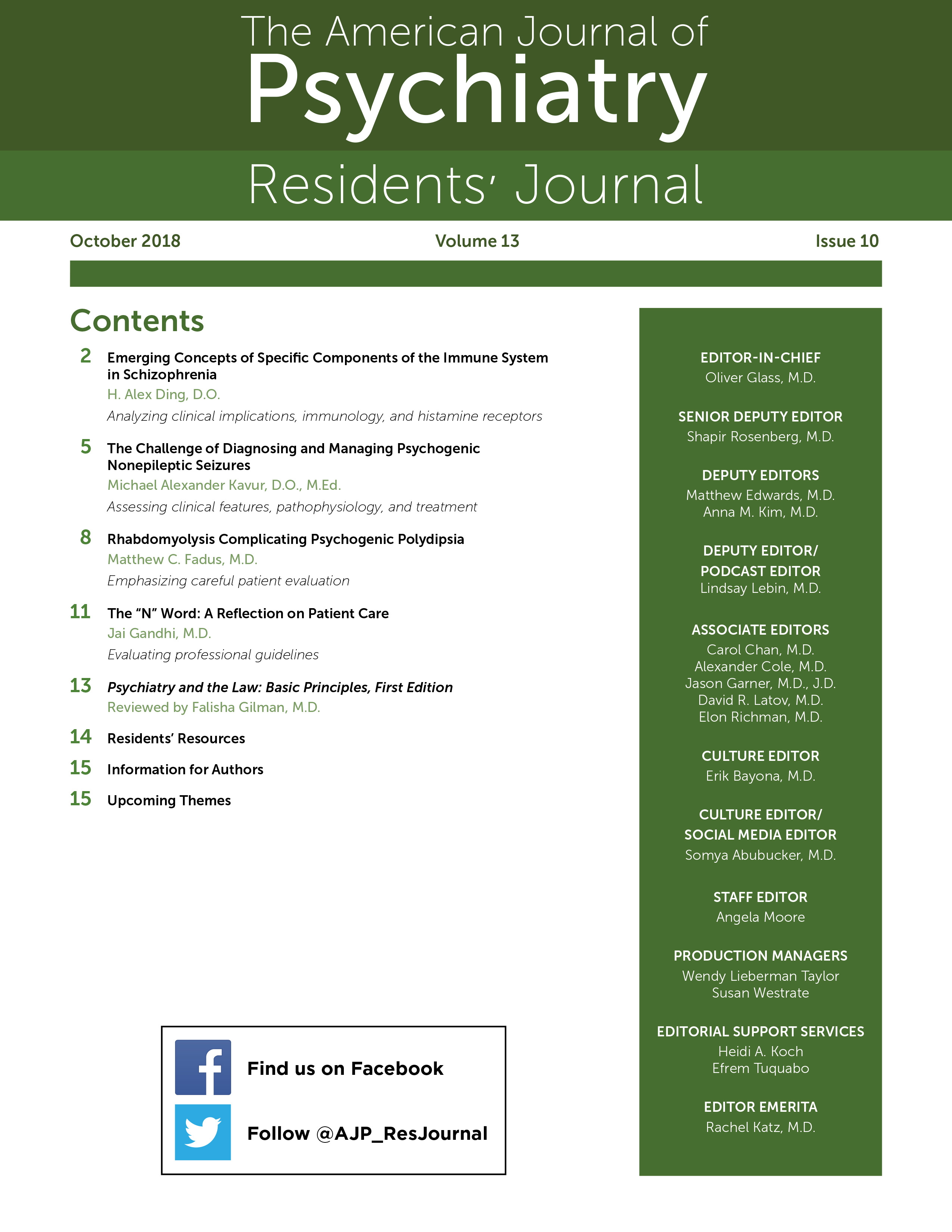Basophils can act as a storage site for histamine, and, when activated, release it as well. Additionally, basophils can produce large amounts of cytokines and interleukin-4 (
13) that infiltrate tissue during allergic inflammation (
14). Multiple studies have investigated the relationship between basophils and histamine. Some investigators have reported that a high basophil count is a good predictor of high blood histamine, with a strong positive correlation between basophil and histamine levels (
15).
Early knowledge of histamine and its receptors was limited to the alimentary tract system and to the body's allergic reactions. Current knowledge suggests that they also play a pivotal role in the CNS as well as in behavior (
16). Some of the functions of histaminergic neurons involve regulating sleep-wake cycles, learning, memory, and emotional behaviors (
17). Histamine may demonstrate pleomorphic actions by acting as a neurotransmitter and as a component of inflammation. Yang et al. (
18) suggested that dysregulation in histamine (not just dopamine) may play a causative role in schizophrenia. Moreover, histamine is already highly recognized in the pathogenesis and physiology of neurodegenerative diseases. Several brain disorders (such as Alzheimer's disease, schizophrenia, Parkinson's disease, and sleep disorders) have been associated with alterations in histamine (
16). Interestingly, elevated histamine levels in the blood have been associated with schizophrenia (
18). It has been observed that patients with schizophrenia are more tolerant to histamine levels, which may be attributed to an abnormality in histamine metabolism (
19). Adam et al. (
19) examined the urine samples of individuals with schizophrenia and found an increased tolerance of and lack of responsiveness to histamine in this patient population. Thus, it could be speculated that high histamine levels are a feature of schizophrenia that merits further investigation. Indeed, considering the role of histamine receptors in neurons, it seems that basophil and histamine-release control may be key components in the relationship between the immune system and schizophrenia.
Postmortem studies have shown that the density of histamine H1 receptors in the frontal cortex is lower in patients with schizophrenia compared with healthy control subjects (
18), possibly due to down-regulation. Vohora and Bhowmik (
20) suggested that H3 receptors take part in modulation of cognition, which is impaired in individuals with schizophrenia with psychotic symptoms (
20). H3-receptor radio-ligand binding has been examined in certain brain regions (e.g., the prefrontal cortex and hippocampus) and reported to be increased in the prefrontal cortex in persons with schizophrenia (
21). This region functions in learning and memory, suggesting that histamine may be a vital component for cognitive development and processing in schizophrenia.
Given these findings, it is not surprising that several studies have demonstrated that histamine receptors (such as H3), in particular ciproxifan and clobenpropit (
17), are potential targets for antipsychotics in that H3-receptor antagonists and inverse agonists may improve treatment in patients with schizophrenia. The human histamine receptors hH1R and hH2R have also been formulated as potentially clinically relevant drug targets (
22).
